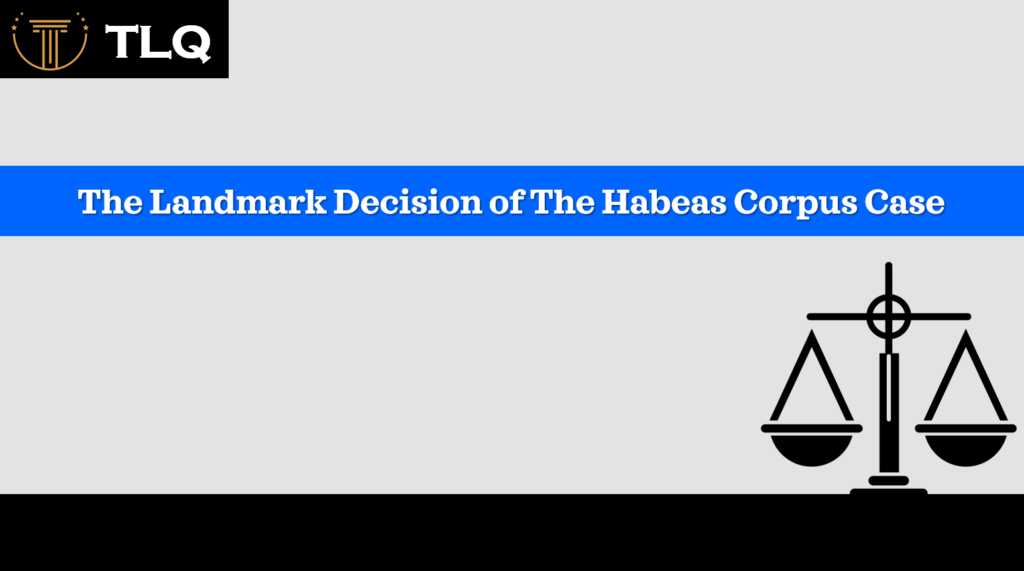Published on 14th January 2025
Authored by: Rabia Mittal
Baba Farid Law College, Faridkot ,Punjab
INTRODUCTION
In the workplace, sexual harassment refers to unwanted sexual behavior, such as physical contact or advances, requests for sexual favors, sexually suggestive comments, displaying explicit material, remarks that are inappropriate regarding someone’s appearance or body, Making crude, offensive, or explicit jokes about sex or sexual acts; using slurs based on a person’s gender or sexual orientation; or making fun of someone or everyone who identifies as a particular gender or sexual orientation. Sexual harassment can occur verbally, physically, or nonverbally. It has the potential to erode gender equality, harm the workplace, and lead to unfair hiring practices. The Protection of Women Against Sexual Harassment at Workplace Act, 2013 is a separate law created in India to protect women in the workplace. The Act establishes a procedure for handling complaints and defines sexual harassment in the workplace. Additionally, it offers protection from malicious or false accusations. Every company with ten or more employees is required to set up an Internal Complaints Committee at each office or branch. The Complaints Committees are able to collect evidence with the same authority as civil courts. If the complainant requests it, the Complaints Committees must allow for conciliation before opening an investigation. Employers are subject to prescribed penalties. A fine will be imposed for failure to comply with the Act’s provisions. Higher fines and the loss of a business license or registration may result from repeated infractions.
BACKGROUND OF POSH ACT ,2013
In a landmark ruling in the 1997 case of Vishakha and others v. State of Rajasthan, the Supreme Court issued certain guidelines.
The Sexual Harassment of Women at Workplace (Prevention, Prohibition and Redressal) Act of 2013 was based on these rules.
Along with citing pertinent international conventions and standards, such as the General Recommendations of the Convention on the Elimination of All Forms of Discrimination Against Women (CEDAW), which India ratified in 1993, the SC also drew strength from a number of constitutional provisions, such as Article 15, which prohibits discrimination based solely on religion, race, caste, sex, and place of birth.
J.S. Verma Committee on Sexual Harassment at Workplace Act: In response to the #MeToo social media campaign, the Union Ministry for Women and Child Development will assemble a committee of prominent legal and judicial experts to examine the institutional and legal framework for preventing sexual harassment at work.
Following the December 2012 Nirbhaya incident, the Justice JS Verma committee was established and presented its recommendations for bolstering the legislation to prevent crimes against women.
Recommendations of the Justice Verma Committee on the Workplace Sexual Harassment Act:
- In the Sexual Harassment at Workplace Act, J.S. Verma Committee had suggested that an employment tribunal be established in place of an internal complaints committee (ICC).
- The committee suggested that rather than operating as a civil court, the tribunal should be able to decide on its own process for handling each complaint in order to guarantee prompt resolution.
- The act’s provision for an internal complaints committee may backfire since handling these complaints internally may deter women from bringing them.
- Domestic workers ought to fall under the Act’s jurisdiction.
- The Committee referred to the Sexual Harassment Act as “unsatisfactory” and stated that it did not align with the principles of the Vishakha guidelines, which were established by the Supreme Court in 1997 to prevent sexual harassment in the workplace.
- The Committee expanded the definition of sexual harassment by stating that any “unwelcome behavior” should be viewed from the complainant’s subjective perspective.
- According to the Verma panel, an employer should be held accountable if :
They allowed sexual harassment to occur or created an atmosphere where sexual misconduct is common and systematic.
When an employer neglects to inform employees about the company’s sexual harassment policy and how they can lodge a complaint.
When a complaint is not forwarded to the tribunal by the employer.
Additionally, the business would be responsible for compensating the complainant.
8. The panel argued against punishing women for making false complaints because doing so might defeat the purpose of the law.
- The Verma panel further stated that the time period of three months to file a complaint should be done away with and the complainant should not be transferred without her consent .
POSH ACT , 2013
About:
In order to address the problem of sexual harassment that women experience in the workplace, the Indian government passed the POSH Act in 2013.
The Act seeks to protect women from sexual harassment and to establish a safe and supportive work environment.
Unwelcome acts like physical contact and sexual advances, requests for sexual favors, sexually suggestive remarks, the display of pornography, and any other unwanted sexually suggestive physical, verbal, or nonverbal behavior are all considered forms of sexual harassment under the POSH Act.(Section 2(n) and Section 3 of POSH Act )
Important Provisions:
Prohibition and Prevention: Employers are legally required by the Act to forbid and prevent sexual harassment in the workplace.
Committee for Internal Complaints (ICC): In order to receive and handle sexual harassment complaints, employers must set up an ICC in every workplace with ten or more workers.
The Complaints Committees are able to collect evidence with the same authority as civil courts. (Section 4 of POSH Act )
Employers’ obligations: It includes implementing awareness campaigns, creating a secure workplace, and posting information about the POSH Act.
Penalties: Violations of the Act may lead to fines and the revocation of business licenses, among other consequences.
CASE LAWS
1. Vishaka and others v. State of Rajasthan(Bhanwari Devi Case)
The Supreme Court of India rendered a landmark decision in the 1997 case of Vishaka and Others v. State of Rajasthan, popularly referred to as the Bhanwari Devi case, which established rules for preventing sexual harassment in the workplace. A group of women’s rights organizations, including the Vishaka Association, filed a complaint in this case after Bhanwari Devi, a social worker in Rajasthan, was gang-raped in 1992 while attempting to stop a child marriage.
The Indian Constitution and international conventions guarantee women’s rights, which are violated by sexual harassment at work, the Supreme Court ruled. The Court further ruled that the state must stop this kind of harassment and give victims efficient redress.
In order to achieve this, the Court released guidelines for preventing sexual harassment in the workplace. These guidelines include establishing state and district complaint committees, establishing an employer code of conduct, and educating staff members about sexual harassment.
Because it established legal remedies for the prevention and redress of sexual harassment and acknowledged it as a type of gender-based violence, the Bhanwari Devi case had a profound effect on women’s rights in India. In India and globally, the case continues to set a significant precedent in the struggle against sexual harassment and other types of gender-based violence.
2. Medha Kotwal Lele & Ors. V. Union of India & Ors.
In 2018, the Supreme Court of India rendered a decision in the case of Medha Kotwal Lele & Ors.v. Union of India & Ors. A petition contesting the constitutionality of the Sexual Harassment of Women at Workplace (Prevention, Prohibition, and Redressal) Act, 2013 (PoSH Act) was filed by a group of women’s rights activists, among them Medha Kotwal Lele.
The petitioners contended that the PoSH Act did not adequately protect women from sexual harassment in the workplace and did not offer sufficient redress to those who were harassed in this way.
They contended that the Act fell short in addressing issues like the need for protection from online harassment, the role that third parties play in enabling sexual harassment, and the requirement that members of internal complaint committees receive gender-sensitive training.
In rejecting the petitioners’ arguments, the Supreme Court ruled that the PoSH Act was constitutional and that it adequately protected women from sexual harassment in the workplace. The Act also complied with India’s international commitments under the Convention on the Elimination of All Forms of Discrimination Against Women (CEDAW), the Court further held.
The Medha Kotwal Lele case is noteworthy because it offered guidance on how the PoSH Act should be applied in practice and reaffirmed the Act’s significance in shielding women from sexual harassment at work. In India’s battle against sexual harassment and other types of gender-based violence, the case continues to set a significant precedent.
3. Tuka Ram And Anr vs State of Maharashtra, AIR 1979 SC 185 (Mathura Case)
The Supreme Court of India rendered a decision in the criminal case of Tuka Ram And Anr v. State of Maharashtra, popularly referred to as the Mathura case, in 1979. A young woman named Mathura was allegedly raped by two police officers at a Maharashtra police station in 1972, which gave rise to the case.
Following a complaint from Mathura’s family, the police officers were accused of rape and other crimes. Because Mathura had agreed to have sex with the officers, the trial court cleared them. The acquittal was upheld by the High Court after Mathura’s family appealed the decision.
After that, the matter was appealed to the Supreme Court, which decided in Mathura’s favor and mandated a new trial for the police officers. The Court ruled that the trial court erred in concluding the case and that Mathura had not consented to sexual relations with the police officers, as the evidence in the case showed.
The Mathura case is noteworthy because it established the rule that a woman’s consent to sexual activity must be obtained voluntarily and clearly, and that consent is not always indicated by the lack of physical resistance. In India’s battle against sexual assault and other types of gender-based violence, the case continues to set a significant precedent.
4. State of Maharashtra vs. Madhukar Narayan Mardikar, AIR 1991 SC 207
The Supreme Court of India rendered a decision in the criminal case of State of Maharashtra v. Madhukar Narayan Mardikar, popularly referred to as the Mardikar case, in 1991.
A woman named Manorama filed a complaint, alleging that while in police custody, she had been sexually assaulted by police inspector Madhukar Narayan Mardikar.
Mardikar was accused of several crimes, including rape. He was found guilty by the trial court and given a life sentence. The High Court upheld the sentence after Mardikar appealed the conviction. Mardikar then filed a Supreme Court appeal.
The Supreme Court affirmed Mardikar’s conviction and sentence, ruling that the case’s evidence proved he had sexually assaulted Manorama while she was being held by the police.The Court further held that because the rape took place in a police station, it was an especially horrible crime because it betrayed the public’s confidence in the police.
The principle that the police have an obligation to protect the rights of people under their custody and that they are accountable for any infringement of those rights is what made the Mardikar case noteworthy. The case continues to set a significant precedent in India’s battle against sexual assault and other types of power abuse.
5. Independent Thought vs. Union of India and Anr.2017
The case started when a non-profit group named Independent Thought filed a petition contesting the constitutionality of an Indian Penal Code exception that permits a husband to engage in sexual activity with his wife if she is between the ages of 15 and 18.
Independent Thought contended that because the exception permitted the sexual exploitation of minors, it infringed upon young girls’ rights to equal protection under the law. The group claimed that the exception was discriminatory and went against international agreements pertaining to children’s rights.
The exception was overturned by the Supreme Court, which agreed with Independent Thought and ruled that it violated young girls’ rights to be shielded from sexual exploitation and abuse.Because it established that children’s rights, including the right to be shielded from sexual exploitation and abuse, must take precedence over cultural and traditional customs, the Independent Thought case is noteworthy. In India’s battle against child marriage and other types of gender-based violence, the case continues to set a significant precedent.
WHAT ARE THE OTHER MAJOR LEGAL FRAMEWORKS FOR WELFARE OF WOMEN ?
Constitutional Protections:
Fundamental Rights: It ensures that all Indians have the right to equality (Article 14), that the State cannot discriminate against them based on their gender (Article 15(1)), and that the State must make special accommodations for women (Article 15(3)).
Fundamental Duties: It guarantees that Article 51(A) forbids actions that diminish women’s dignity.
Legislative Framework: The Protection of Children from Sexual Offenses (POCSO), 2012; the Dowry Prohibition Act, 1961; the Protection of Women from Domestic Violence Act, 2005; and the Sexual Harassment of Women at Workplace (Prevention, Prohibition, and Redressal) Act, 2013
Programs for Women’s Empowerment: Mahila Police Volunteers, One Stop Center, Beti Bachao Beti Padhao, UJJAWALA: A Comprehensive Scheme for Trafficking Prevention and Rescue, Rehabilitation, and Reintegration of Victims of Trafficking and Commercial Sexual Exploitation, Mahila Shakti Kendras (MSK), NIRBHAYA Fund, A Plan for Women in Tough Situations (SWADHAR Greh), Nari Shakti Puruskar
ENFORCEMENT PROBLEMS FACED WHILE IMPLEMENTING POSH ACT {Key Concerns Raised by the Supreme Court?}
Concern: The PoSH Act’s implementation had significant flaws and ambiguities. For instance, only 16 of the 30 national sports federations had established Internal Complaints Committees (ICCs) as required.
State employees, public officials, private enterprises, organizations, and institutions in charge of carrying out the PoSH Act are all negatively impacted by this.
Women’s physical, mental, and self-esteem are all negatively impacted by these mistakes. Additionally, it discourages women from reporting sexual harassment because they are unsure of the procedure and lack confidence in it.
Suggestion: The Act will only be a formality if the workplace continues to be antagonistic, callous, and unresponsive. To guarantee that women receive the respect and dignity they are entitled to in the workplace, the Act must be strictly enforced.
Verifying whether pertinent bodies have established ICCs, Local Committees (LCs), and Internal Committees (ICs) in accordance with the Act requires a time-bound exercise.
directed organizations to post information about their committees on their websites.
The SC has given government ministries and bodies eight weeks to adhere to the 2013 Act’s requirements.
WHAT MIGHT BE THE WAY FORWARD / RECOMMENDATIONS?
Employment Tribunal: In accordance with the Sexual Harassment at Workplace Act, an employment tribunal should be established in lieu of an internal complaints committee (ICC).
Authority to Establish Own Procedure: It is suggested that the tribunal not operate as a civil court but rather have the authority to establish its own procedure for handling each complaint in order to guarantee prompt resolution.
Extending the Act’s Scope: The Act should apply to domestic workers as well.
The Justice Verma Committee expanded the definition of sexual harassment by stating that any “unwelcome behavior” should be viewed from the complainant’s subjective perspective.
Employer Liability: According to the Justice Verma Committee, an employer is accountable if they allowed sexual harassment ,allowed a culture in which sexual misconduct becomes commonplace and organized, where the company’s sexual harassment policy and the channels for employees to lodge a complaint are not disclosed by the employer.
CONCLUSION
Despite having a shared workspace with men, women still experience gender-based violence. Although women are outnumbered by men in the majority of organizations today, their performance is evaluated based on all other criteria rather than the caliber and volume of their work. One form of violence that working women experience is sexual harassment. Even though the government passed the POSH Act, there aren’t enough expert committees to deal with these kinds of cases.
REFERENCES
- The Sexual Harassment of Women at Workplace (Prevention, Prohibition and Redressal )Act ,2013
- S. Verma Committee on Sexual Harassment at Workplace Act :: Drishti IAS Coaching in Delhi, Online IAS Test Series & Study Material. Available at: https://www.drishtiias.com/printpdf/j-s-verma-committee-on-sexual-harassment-at-workplace-act (Accessed: 12 December 2024).
- SC asks States to appoint officers under POSH act, 2013 ::Drishti IAS .Available at:https://www.drishtiias.com/daily-updates/daily-news-analysis/sc-asks-states-to-appoint-officers-under-posh-act-2013 (Accessed: 12 December 2024)
- Landmark Judgements related to Prevention Of Sexual Harassment (POSH):: ILMS Academy .Available at https://www.ilms.academy/blog/landmark-judgements-on-posh(Accessed : 12 December 2024)
- Sexual harassment is a kind of experience, forgetting it is difficult, and remembering it is even worse::Free Law: Get Free Headnotes & Judgments .Available at https://www.freelaw.in/legalarticles/Sexual-Harassment-of-Women-at-Workplace(Accessed : 12 December 2024)




